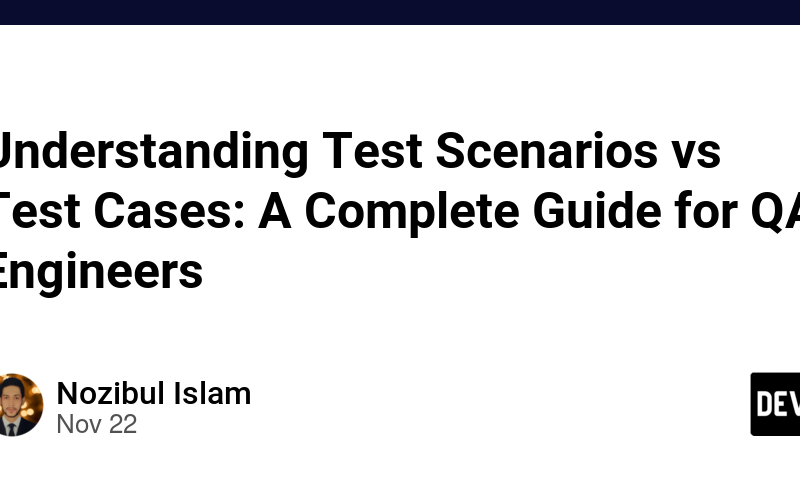Understanding Test Scenarios vs Test Cases: A Complete Guide for QA Engineers.
As a QA engineer, understanding the distinction between test scenarios and test cases is crucial for effective testing. In this guide, we’ll break down these concepts and help you understand when and how to use each one.
What is a Test Scenario?
A test scenario is like a high-level blueprint of what needs to be tested. Think of it as the “big picture” view of your testing strategy.
Key Characteristics:
- High-level description
- Broader in scope
- Focuses on “what” to test
- Less detailed
- Used in early planning stages
Example Test Scenario:
“Test the shopping cart functionality in an e-commerce application”
What is a Test Case?
A test case is the detailed implementation of how to test a specific scenario. It’s like a step-by-step recipe that anyone can follow to perform the test.
Key Characteristics:
- Detailed step-by-step instructions
- Specific inputs and expected outputs
- Focuses on “how” to test
- Highly detailed
- Used during test execution
Example Test Case:
Test Case ID: TC_001
Title: Add Product to Shopping Cart
Steps:
1. Navigate to product page
2. Click "Add to Cart" button
3. Verify cart icon updates
4. Click on cart icon
Expected Result: Product appears in cart with correct quantity and price
Key Differences at a Glance
1. Definition
- Test Scenario: High-level idea of what to test
- Test Case: Detailed steps for testing
2. Detail Level
- Test Scenario: Less detailed, broader scope
- Test Case: Very detailed, specific actions
3. Purpose
- Test Scenario: Overall system coverage
- Test Case: Validate specific functionality
4. Focus
- Test Scenario: What to test
- Test Case: How to test
5. Usage Timing
- Test Scenario: Planning phase
- Test Case: Execution phase
Real-World Example
Let’s look at a complete example to understand the hierarchy:
Test Scenario:
“Test the e-commerce shopping cart functionality”
Related Test Cases:
Test Case 1: Add product to cart
Test Case 2: Remove item from cart
Test Case 3: Update quantity in cart
Open cart
Change quantity
Verify price calculation
- Expected Result: Price updates correctly
Best Practices
Test Scenarios:
- Keep them business-oriented
- Make them comprehensive
- Avoid technical details
- Focus on end-user workflows
Test Cases:
- Make them specific and detailed
- Include clear steps
- Specify expected results
- Add preconditions if needed
- Include test data
Conclusion
Understanding the difference between test scenarios and test cases is fundamental to effective testing. Test scenarios help ensure comprehensive coverage, while test cases provide the detailed steps needed for execution. Use both in conjunction to create a robust testing strategy.
Source link
lol

